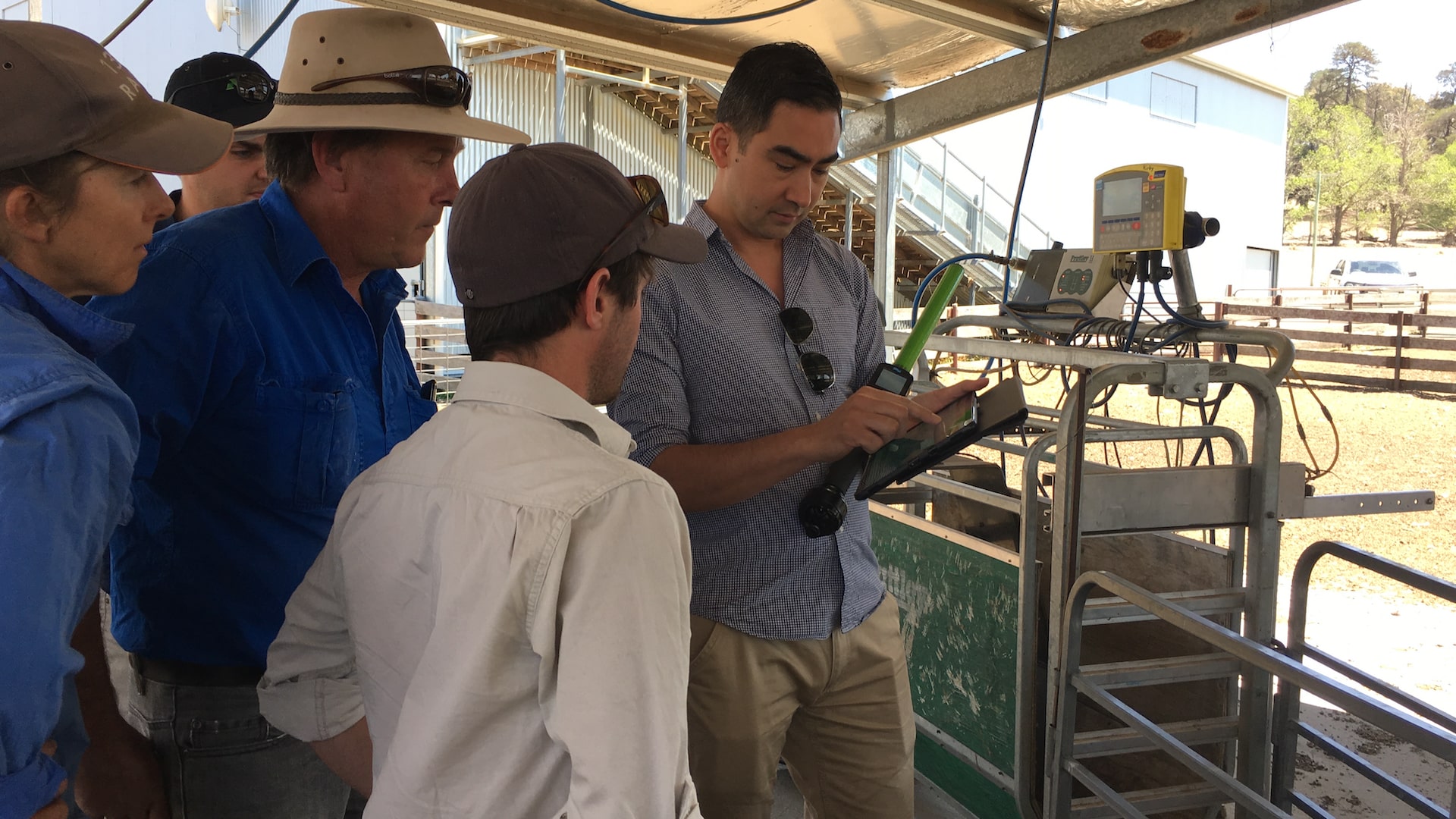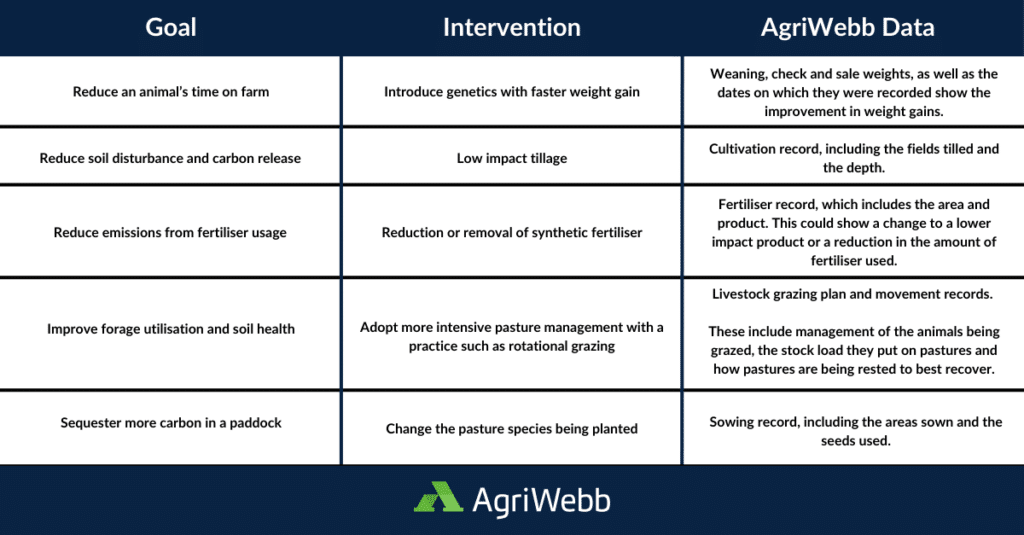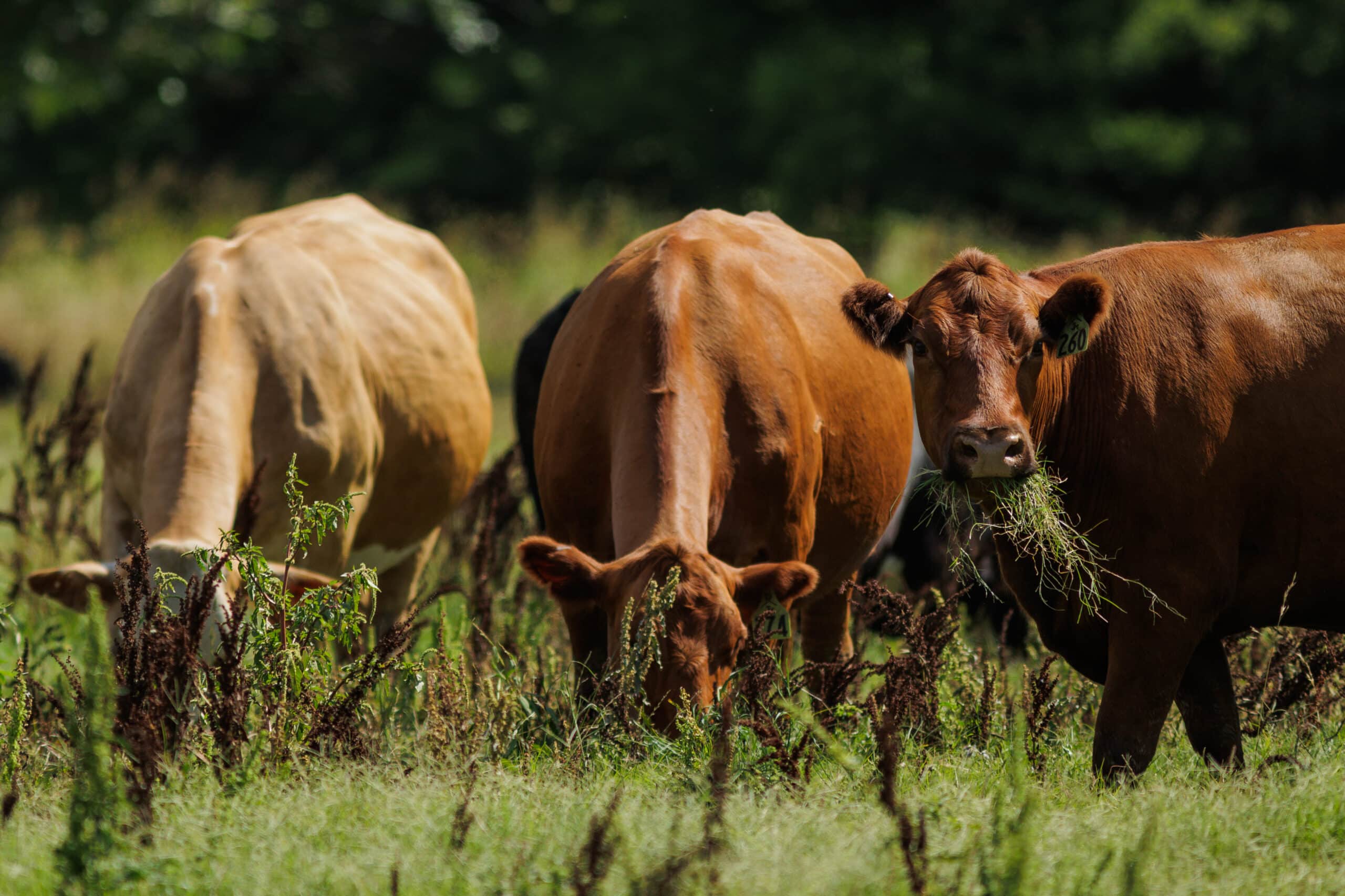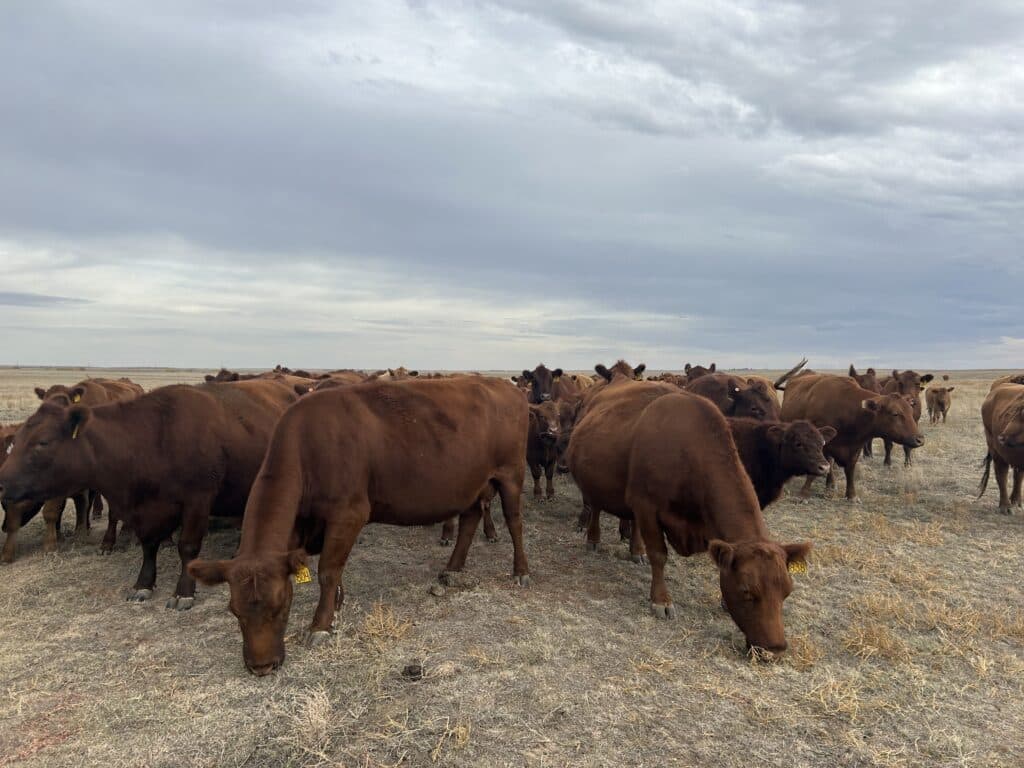Understanding farm data for sustainability

This article was written by Philip Chan, Chief Product Officer at AgriWebb, and shares his thoughts and experiences about the role data and innovation continue to play in the beef sustainability space.
The number of sustainability programs in the livestock space have increased in the last year, many of which are complex and include multiple groups collaborating together and new data requirements for how to facilitate that. AgriWebb’s role in these projects is to be the data management partner, and I thought it would be helpful to outline the commonalities and trends we’re seeing in a series of articles to support the work being done in this space.
To kick off this series, I’ll outline the producer-level data requirements and walk through how data is being used.
Before diving into these areas, we’ll cover a key ingredient to the proverbial recipe of these programs, digital farm and ranch-level data.
Why is digital data needed?
A major blocker for programs in the past has been the lack of data in digitised formats. With notebooks and spreadsheets scattered across computers, truck cabs and jeans pockets, collecting and analysing the historical data needed for accurate baselining and the real-time data needed for ongoing quantification has been cumbersome and unscalable.
In addition to collecting the required data, there are often multiple specialised groups involved in a sustainability program, and sharing data between them is essential to the program and producer’s success. Typically, there are three core roles working together in a program:
-
- technical advisor;
-
- measurement, reporting and verification (MRV) group; and
-
- data management platform.
When data is captured in the data, or livestock, management software that provides easy and secure data sharing capabilities for the program, accurate baselines can be calculated and outcomes become rigorous. This is why digital data is the single most important element to the success and scalability of sustainability programs.
What farm-level data points are needed?
Based on the Science Based Targets initiative (SBTi) and Greenhouse Gas Protocol, many of the required data points for practice monitoring and measurement, reporting and verification (MRV) help producers improve the productivity and versatility of their operations. Examples of these data points include livestock characteristics such as species, age, breed, sex, date of birth and weight of animals in the program, livestock records showing animal movements, births and deaths, pasture characteristics, farming activities including tillage, manure management, fertiliser usage and cropping, as well as grazing and feed data like stocking rates, feed amounts, types, additives and more.
AgriWebb has created a checklist that provides a comprehensive list of these categories and the data points that may be required depending on the program.
The need for historical farm data
Real-time operational data isn’t the only required form of data; historical data is needed too. All sustainability programs begin by establishing the current and historical levels of emissions on an operation. The process begins with a producer interview to gather the historical data needed to generate an initial baseline. In the ideal case, the producer has all the information stored in a livestock management software tool (like AgriWebb).
Reality, though, is different, and producers often don’t have everything in digital form, and may not even have historical records for some of the required data. In those cases, data must be collected from paper records and interviews. In situations where they don’t have the required data, benchmark information from common data sources can be used. For example, a producer may not have run feed tests to measure crude protein or natural detergent fibre in previous years, information that is used by many of the MRV models. In these cases, benchmark values can be used from national databases such as the USDA Commodity Database.
Once captured, ideally within livestock management software, this information is shared from the software to the MRV partner to run the baseline.
Examples of data collected for a baseline, include:
-
- the farm map, including previous years;
-
- animal numbers by age class;
-
- the pasture composition of each paddock;
-
- fertiliser usage;
-
- cultivation (tillage) records;
-
- and what products animals were fed.
How are these data points being used?
As mentioned above, producer-level data points are used for a variety of purposes. Let’s dive into how sustainability programs use farm or ranch-level data.
Baselining
When starting a carbon or sustainability program, producers are required to provide historical data to establish a baseline of their operation’s greenhouse gas emissions. This data is then used, typically by an MRV provider, to generate a baseline emissions report. This baseline is then used by both a program’s MRV partner and the technical advisor to recommend a set of interventions that a producer can implement to achieve the optimal outcome to reduce their emissions.
Implementing management changes (aka interventions)
The key to all sustainability programs is equipping producers to make changes in how they run their operation to reduce greenhouse emissions. These changes are referred to as management practice changes or interventions, and are usually recommended by the technical advisor in the project.
Because livestock operations vary in how they’re managed and have different geographic conditions, the specific interventions for each operation will vary. Interventions may also differ between insetting and offsetting programs, but will typically be focused on either removing or reducing GHGs.
In the case of a removals program, where the goal is to absorb carbon CO2e from the atmosphere and store it in the soil or vegetation through a process called sequestration, selected interventions might include practices that promote pasture growth or tree planting in order to achieve reduction goals.
Abatement programs, where the goal is to remove greenhouse gases from within a supply chain, utilise interventions related to improving animal productivity so animals spend less time on farm or ranch and therefore emit fewer emissions, improving feed conversion so less energy is wasted in the system, or reducing fertiliser usage.
To show what this can look like, the following table highlights goals, the specific intervention involved, and the data used to demonstrate that the intervention has been implemented. Each of these records provides both a temporal and spatial view of when something happened and the specific area on farm where an intervention was implemented and recorded, be that for pasture, crop or livestock activities.

Measurement data
In order to measure the impact of implementing interventions, and also to receive payment, producers must share operational data from their livestock management software to the MRV provider. Depending on the program’s needs, this could be on a regular monthly, quarterly or annual basis. In the majority of cases, this measurement data is the same information required to generate the baseline.
In this case, it is again useful for the producer to be using livestock management software, like AgriWebb, to be tracking the day to day activities in their operation. This ensures that data will be up-to-date and there isn’t an additional overhead for the producer to provide this data. More importantly though, the producer can benefit from the data and insights that this brings all year round, to improve the visibility, productivity and performance of their operation.
Conclusion
Regardless of the type of program or the interventions involved, the need for timely and accurate data is central to a program’s success. Whether it’s the initial phase of capturing historical data to provide a baseline, or providing ongoing evidence that management practices are being implemented and the intended effects are occurring, the best way to streamline these processes is with livestock management software. Solutions like AgriWebb provide both a tool for collecting the needed data for a sustainability program while also enabling producers to understand and improve the productivity and profitability of their operation, which is crucial to creating a resilient future.
As we look ahead, I’ll focus my next article on how data is collected and shared in a livestock sustainability program.


